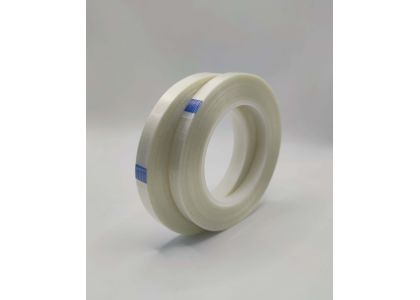
Filament electrical tape is a critical component in the realm of electrical insulation, playing a significant role in enhancing the performance and reliability of power transformers. Understanding the technical aspects of insulation filament tape for oil transformers reveals how its composition and features influence transformer longevity and efficiency. With various types available, including oil resistant filament tape and different insulation filament tape thicknesses, it's essential to delve into these factors to grasp their impact fully. This article will explore the specifications, application benefits, and real-world implications of filament electrical tape, providing insights for those interested in optimal transformer performance.
Filament electrical tape typically consists of a strong backing material reinforced with fiberglass filaments. This unique composition grants it exceptional tensile strength and durability, making it suitable for high-stress environments such as power transformer applications. The primary function of this tape is to insulate and protect electrical components from heat, moisture, and mechanical wear. The use of insulation filament tape for oil transformers is particularly vital, as transformers are often subjected to various environmental conditions that can degrade performance over time.
The thickness of insulation filament tape is crucial because it directly affects the tape’s insulating properties and its ability to withstand the rigors of transformer operation. Thicker tapes generally offer better insulation performance, which can help in preventing electrical breakdown, enhancing overall safety, and prolonging transformer life.
The effectiveness of oil resistant filament tape lies in its composite materials, which typically include a blend of polyester film and fiberglass. This combination not only provides excellent electrical insulation but also ensures resistance to high temperatures and corrosive oils commonly found in transformers. The design of this tape allows it to maintain its integrity and performance even when exposed to environmental stressors.
Key features to consider when selecting filament electrical tape include:
Tensile Strength: A higher tensile strength indicates better resistance to physical stress and vibration, making it ideal for industrial applications.
Temperature Range: The operational temperature range of the tape determines its applicability in specific transformer environments, especially those prone to overheating.
Adhesive Quality: The type of adhesive used can impact the tape’s longevity and performance under extreme conditions, influencing adhesive pull strength and resistance to oil and moisture.
The performance of transformers can significantly benefit from the correct use of insulation filament tape. For instance, improper insulation can lead to electrical faults, resulting in transformer failures and costly downtimes. A case study by a leading filament electrical tape manufacturer demonstrated that transformers properly insulated with quality filament tape exhibited a 30% increase in lifespan compared to those using inferior insulating materials. This example highlights the importance of selecting the right types and thicknesses of insulation filament tape.
Moreover, users have reported enhanced performance metrics in power transformers following the application of quality oil resistant filament tape. Enhanced insulation properties help maintain consistent operational efficiency, reduce heat generation, and manage thermal dynamics effectively within the transformer.
In one real-world application, a utility company faced persistent transformer failures leading to significant operational losses. After replacing traditional insulation methods with insulation filament tape for oil transformers, they noticed a remarkable decline in failure rates. Users reported that once the tape was applied, the transformers not only operated more efficiently but also required less frequent maintenance, ultimately leading to lower operational costs.
Additionally, feedback from engineers working with different insulation filament tape thicknesses indicated that customizing the tape thickness according to specific transformer specifications led to optimized insulation performance, as it provided tailored support against adverse conditions.
To maximize the benefits of filament electrical tape, consider the following best practices:
Assess Environmental Conditions: Understanding the operational environment of the transformer is key to selecting the appropriate type and thickness of tape. For environments with high moisture or temperature fluctuations, oil resistant filament tape is advisable.
Proper Installation Techniques: Ensure that the tape is applied evenly without any wrinkles or air bubbles. Overlapping layers should be managed appropriately to prevent weak points in insulation.
Regular Inspections: Conduct routine inspections to ensure the tape remains intact and effective. Any signs of wear or degradation should be addressed immediately.
The science of filament electrical tape and its various types, such as oil resistant filament tape and options based on insulation filament tape thickness, plays a crucial role in enhancing power transformer performance and reliability. Understanding the composition and correct application of this tape can lead to significant improvements in transformer longevity and operational efficiency. As highlighted by user experiences and industry reports, investing in quality filament electrical tape can be a game-changer for utility companies and manufacturers alike. Prioritizing these insulating solutions is essential for ensuring robust and efficient transformer operations.